#alfonso iv of portugal
Text
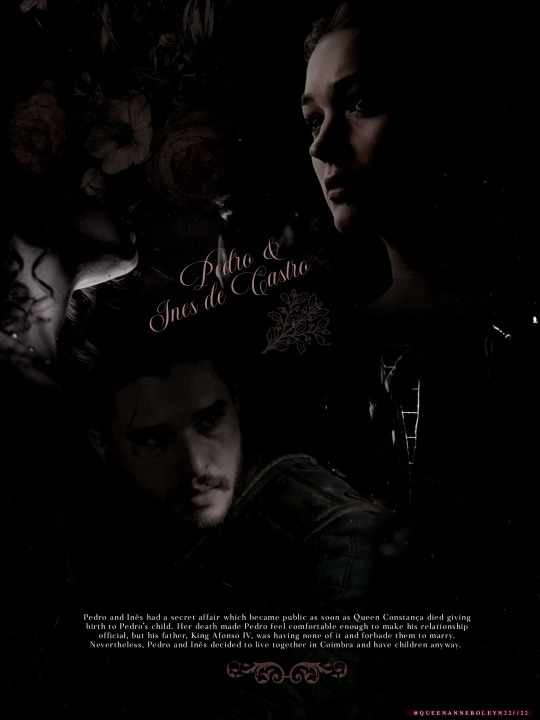
"There is a love story which has left a mark on the History of Portugal: the tale of forbidden love between Infante Peter and Inês de Castro, lady-in-waiting to his wife Constance. Although he was married, the Infante would have secret romantic meetings with Inês in the gardens of Quinta das Lágrimas. When Constance died in 1345, Peter and Inês lived as a married couple, a decision which angered King Afonso IV, his father, who was strongly opposed the relationship. The court and the people also disapproved of it.
Peter and Inês lived at Santa Clara Palace, in Coimbra, with their three children for many years. However, King Afonso IV, who was constantly under pressure because of the growing disapproval of the union within the court, decided to order the murder of Inês de Castro in January 1355. Deranged by pain, Peter led an uprising against the King and would never forgive his father for murdering his lover. When he finally took the crown in 1357, Peter ordered the arrest and execution of Inês’ murderers by ripping their hearts out. This action earned him the title of “the Cruel”. Later, after swearing that he had secretly married Inês de Castro, King Peter demanded that she be recognized as Queen of Portugal. In April 1360, he ordered the body of Inês to be moved from Coimbra to the Royal Monastery of Alcobaça, where two magnificent tombs were built so that he could rest next to his eternal lover forever."
Source: centerofportugal.com
#perioddramaedit#history#edit#history edit#pedro i#pedro of portugal#peter of portugal#ines de castro#portuguese history#14th century#sophia myles#kit harington#history lover#historian#historical figures#constance of portugal#alfonso iv of portugal#pedro e ines#pedro and ines#infante pedro#tragic love#love stories#historic love#women in history#historical
70 notes
·
View notes
Photo
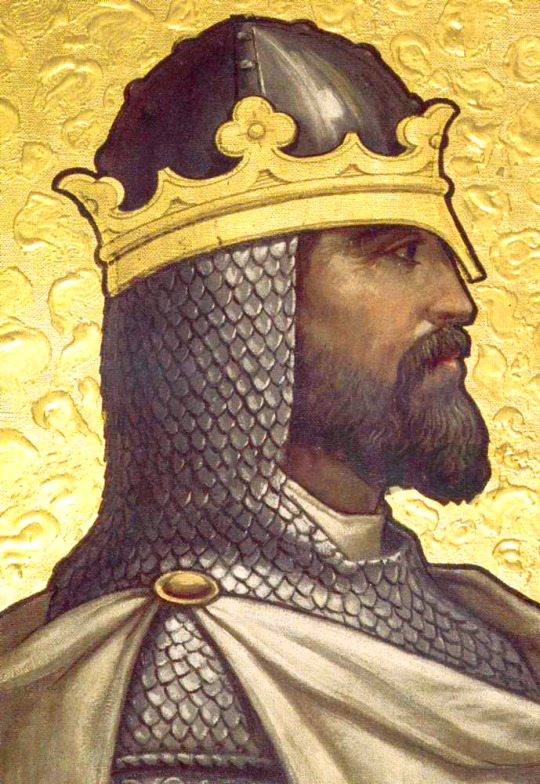

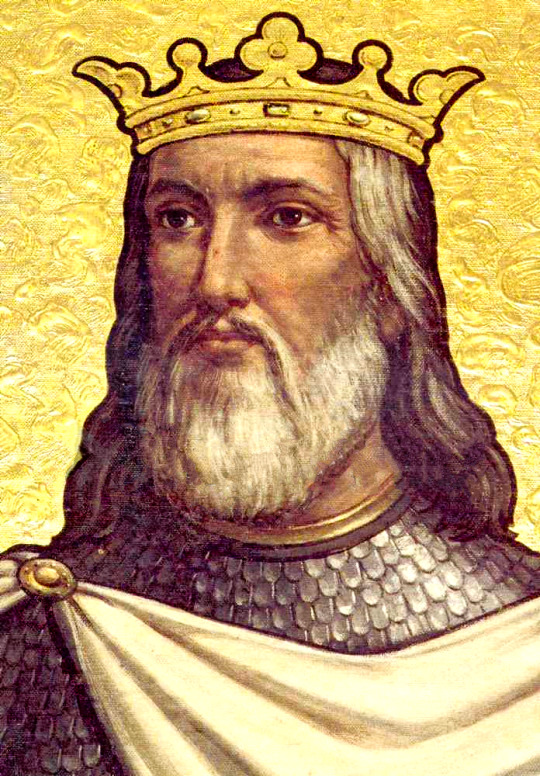






Portuguese monarchs: The House of Burgundy (Afonso Henriques, Sancho I, Afonso II, Sancho II, Afonso III, Denis I, Afonso IV, Peter I and Ferdinand I).
#reis de portugal#kings of portugal#reino de portugal#Alfonso henriquez#sancho i#alfonso ii#sancho ii#alfonso iii#dinis i#alfonso iv#pedro i#fernando i#house of burgundy#casa de borgonha#list of monarchs
12 notes
·
View notes
Text

Drawing of Henry VI of England by Jörg von Ehingen.
From 1457-1459, Swabian knight Jörg von Ehingen traveled Europe participating in various campaigns; throughout, he kept a journal and sketchbook of his impressions of the many royal courts he passed through. His compilation includes portraits, in the order of his visits, of Duke Ladislaus V of Austria, Charles VII of France, Henry IV of Castile, Henry VI of England, Alfonso V of Portugal, Janus III of Cyprus, Duke René of Anjou, John II of Aragon, and James II of Scotland.
#we love a contemporaneous portrait from an eyewitness#absolutely dapper hat#you may be familiar with Alfonso V's incredible poulaine shoes and/or his terrible heraldic lion#Henry's got pretty swell poulaines himself#altho I have just noticed his lil skelly hands#plantagenets#manuscript
61 notes
·
View notes
Text

Columbano Bordalo Pinheiro (1857-1929)
"Tragedy of Inês de Castro" (1901-1904)
Realism
Located in the Museu Militar de Lisboa, Lisbon, Portugal
Inês de Castro (1325-1355) was a Galician noblewoman and courtier, best known as lover and posthumously-recognized wife of King Peter I of Portugal. The dramatic circumstances of her relationship with Peter (at the time Prince of Portugal), which was forbidden by his father King Afonso IV, her murder on the orders of Afonso--she was decapitated in front of one of her young children—Peter's bloody revenge on her killers—he captured two of them and publicly executed them by ripping their hearts out, claiming they didn't have one after pulverizing his own heart—and the legend of the coronation of her exhumed corpse by Peter, have made Inês de Castro a frequent subject of art, music, and drama through the ages.
Inês and Peter also had several children, whom he would legitimize after her death. Afonso, died shortly after birth. John, Duke of Valencia de Campos, claimant to the throne during the 1383–85 Crisis. Denis, Lord of Cifuentes, claimant to the throne during the 1383–1385 Crisis. And Beatrice, who married Sancho Alfonso, 1st Count of Alburquerque, the great-grandmother of Ferdinand II of Aragon and thereby an ancestor of all Spanish monarchs.
#paintings#art#artwork#history painting#tragic love#columbano bordalo pinheiro#fine art#realism movement#lisbon military museum#museum#art gallery#portuguese artist#history#tragedy#doomed love#forbidden love#portugal#monarchy#early 1900s#early 20th century
108 notes
·
View notes
Photo

Isabella I of Castile
Isabella I of Castile (1451-1504), was Queen of Castile (r. 1474-1504) and of Aragon (r. 1479-1504) alongside her husband Ferdinand II of Aragon (1452-1516). Her reign included the unification of Spain, the reconquest of Granada, sponsoring Christopher Columbus in his voyage to explore the Caribbean, and the establishment of the Spanish Inquisition.
Early Life
Isabella was born 22 April 1451 in the town of Madrigal de las Altas Torres in Castile (which is now modern Spain) to John II of Castile (r. 1406-1454) and Isabella of Portugal (1447-1454). Despite having two brothers and spending much time with her mother in Arévalo where she participated in more ladylike activities, Isabella was soon drawn in and involved with the Castilian political world. While there were no laws against women being on the throne, Isabella was third in line because her brothers were higher up the succession line. The iron-willed and determined young woman was brought to the Court of Castile when she was in her early teenage years so that her father could keep an eye on her. Isabella was well-versed in Latin, and she studied history and theology, which furthered her religious convictions, which would be extremely influential in her actions as queen in the future.
Isabella's brother Enrique IV became king as Henry IV of Castile (r. 1454-1474), but discontent with his rule soon became vocalized as the kingdom was dissatisfied with his ineffective rule. Henry struggled with producing a legitimate heir, as his first marriage bore no children, and his only daughter, Juana (1462-1530), was believed to be an illegitimate child. He was unable to win back Granada, which had been under Muslim control since the mid-1200s, and had Jewish and Muslim advisors in place, damaging the image of Castile being a Christian kingdom.
To placate the nobles, Henry named his brother Alfonso (1453-1468) heir, but Alfonso had to marry his daughter so they could both rule. When Henry ultimately reneged on this deal and supported his daughter's claim, the nobles began their campaign to place Alfonso on the throne. When Alfonso died in 1468, of suspected poisoning, the nobles approached Isabella as she was also a legitimate candidate. She refused to take the crown and wished to wait for her brother to leave. Seeing this, Henry negotiated with the nobles and made Isabella his heir.
Continue reading...
18 notes
·
View notes
Photo

Karl Pavlovich Bryullov (Russian, 1799-1852)
The Death of Inês de Castro, Morganatic Wife of Don Pedro, Infant of Portugal, 1834
The Mikhailovsky Palace
The painting is based on an event from Portuguese history described in Luís de Cam es epic poem Os Lusíadas. Inês de Castro was the morganatic wife of Pedro, son of King Afonso IV who was killed by the courtiers lvaro Gonçalves, Pêro Coelho and Lopes Pacheco with the agreement of Alfonso IV. Karl Brullov is known to have painted the picture in the space of seventeen days in Milan in 1834. It was then exhibited at the Pinacoteca di Brera that same year.
#Karl Pavlovich Bryullov#ines des castro#Inês de Castro#world history#european history#art#fine art#russia#russian#iberia#portugal#europe#europa#european#european art#western civilization#blonde#woman
52 notes
·
View notes
Text
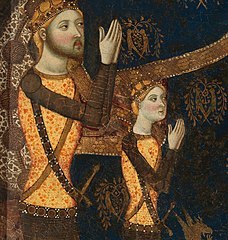

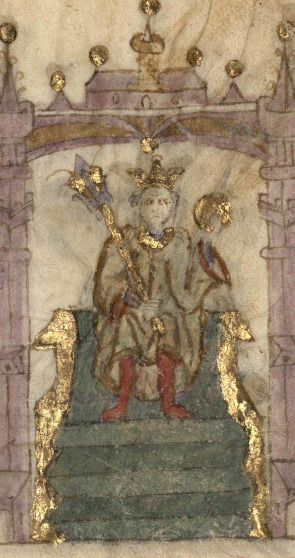
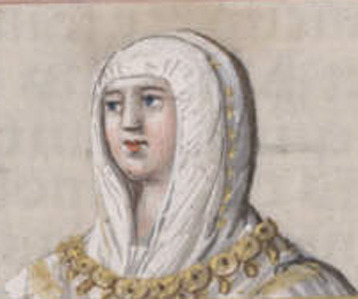
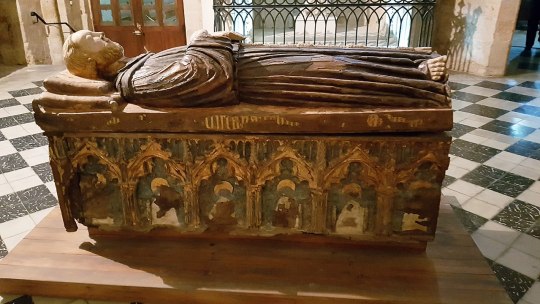
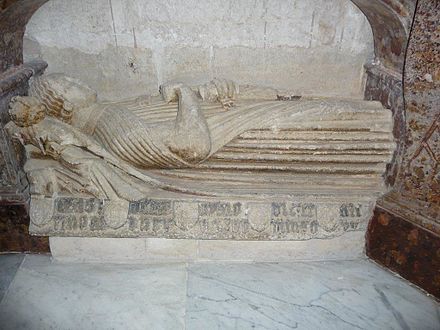

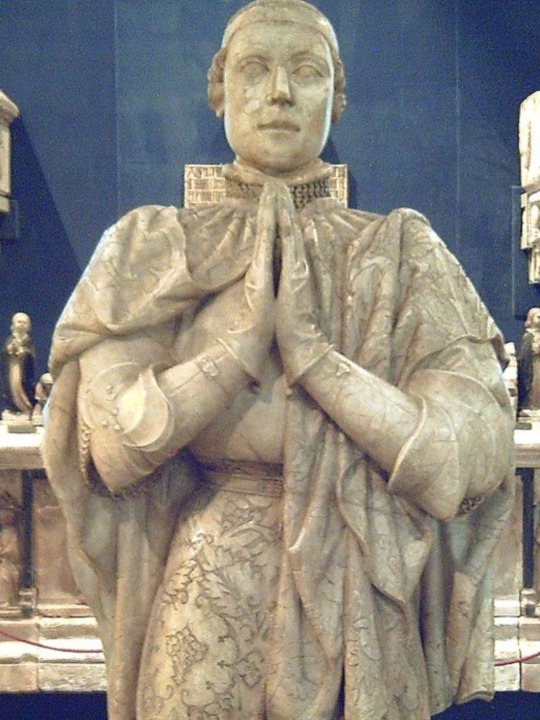
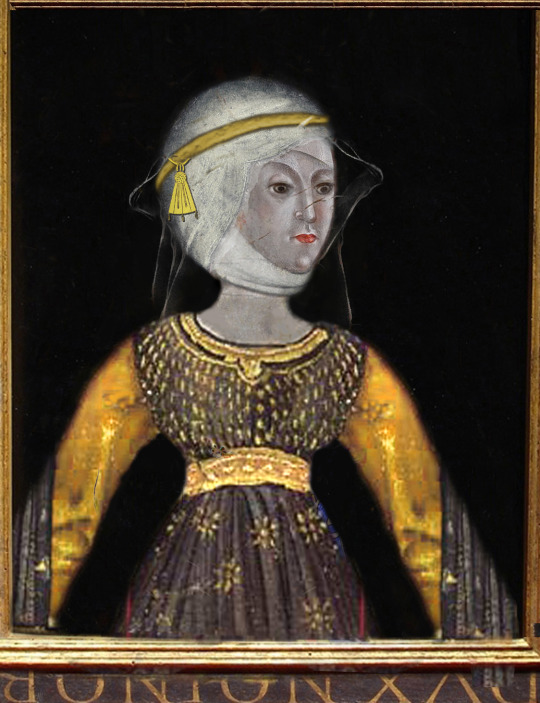

The Bastard Kings and their families
This is series of posts are complementary to this historical parallels post from the JON SNOW FORTNIGHT EVENT, and it's purpouse to discover the lives of medieval bastard kings, and the following posts are meant to collect portraits of those kings and their close relatives.
In many cases it's difficult to find contemporary art of their period, so some of the portrayals are subsequent.
1) Henry II of Castile ( 1334 – 1379), son of Alfonso XI of Castile and Leonor de Guzmán; and his son with Juana Manuel de Villena, John I of Castile (1358 – 1390)
2) His wife, Juana Manuel de Villena (1339 – 1381), daughter of Juan Manuel de Villena and his wife Blanca de la Cerda y Lara; with their daughter, Eleanor of Castile (1363 – 1415/1416)
3) His father, Alfonso XI of Castile (1311 – 1350), son of Ferdinand IV of Castile and his wife Constance of Portugal
4) His mother, Leonor de Guzmán y Ponce de León (1310–1351), daughter of Pedro Núñez de Guzmán and his wife Beatriz Ponce de León
5) His brother, Tello Alfonso of Castile (1337–1370), son of Alfonso XI of Castile and Leonor de Guzmán
6) His brother, Sancho Alfonso of Castile (1343–1375), son of Alfonso XI of Castile and Leonor de Guzmán
7) Daughters in law:
I. Eleonor of Aragon (20 February 1358 – 13 August 1382), daughter of Peter IV of Aragon and his wife Eleanor of Sicily; John I of Castile's first wife
II. Beatrice of Portugal (1373 – c. 1420) daughter of Ferdinand I of Portugal and his wife Leonor Teles de Meneses; John I of Castile's second wife
Son in law:
III. Charles III of Navarre (1361 –1425), son of Charles II of Navarre and Joan of Valois; Eleanor of Castile's huband
8) His brother, Peter I of Castile (1334 – 1369), son of Alfonso XI of Castile and Mary of Portugal
9) His niece, Isabella of Castile (1355 – 1392), daughter of Peter I of Castile and María de Padilla
10) His niece, Constance of Castile (1354 – 1394), daughter of Peter I of Castile and María de Padilla
#jonsnowfortnightevent2023#henry ii of castile#john i of castile#juana manuel de villena#eleanor of castile#alfonso xi of castile#leonor de guzmán#tello alfonso of castile#sancho alfonso of castile#peter i of castile#constance of castile#isabella of castile#asoiaf#a song of ice and fire#day 10#echoes of the past#historical parallels#medieval bastard kings#bastard kings and their families#eleanor of aragon#beatrice of portugal#charles iii of navarre#canonjonsnow
14 notes
·
View notes
Text

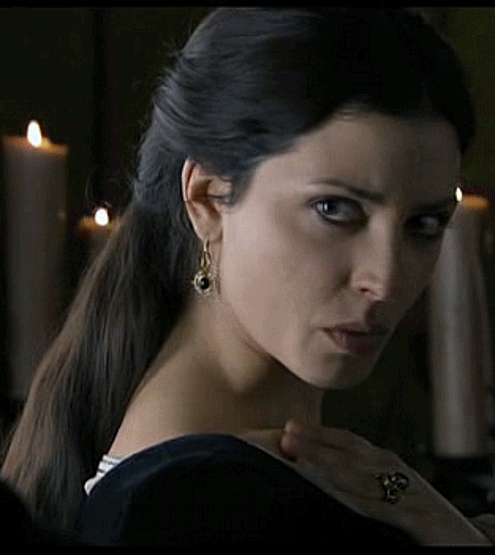

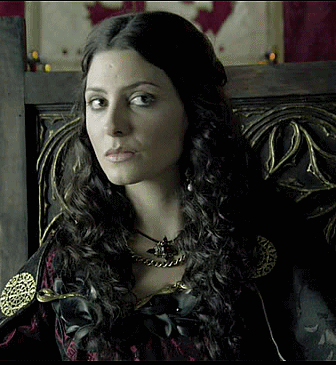
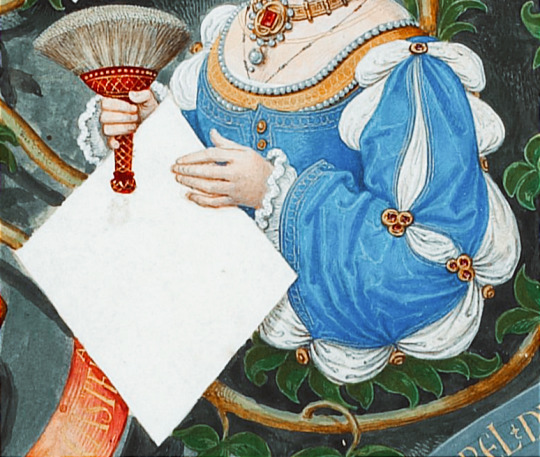
Juana of Portugal (1439-1475)
She was the posthumous daughter of King Duarte of Portugal and his wife Leonor of Aragon. Juana grew up in exile with her mother, due to the intrigues of the Portuguese court, and lived first at the Monastery of Santa María in Medina del Campo and later in Toledo, where Leonor of Aragon died. At the age of six, Juana returned to the Portuguese court of her brother Afonso V.
In 1455 the young Juana married her cousin Enrique IV of Castile, who had repudiated his first consort after thirteen years of marriage. The couple produced no children. The marriage was annulled on the grounds of an impotence that was specific rather than general, an impotence that applied only to Enrique’s relationship with Blanca of Navarre. Yet such an extraordinary explanation amounted to a case of maleficium (spell), with the clear implication that Blanca was the guilty party, and in addition she was obliged to leave Castile and return to Navarre.

Juana of Portugal was described as beautiful, cheerful and coquettish. The sources speak of the licentiousness introduced by the young Queen and her ladies in the austere Castilian court. They liked to use perfums, makeups, dresses that displayed too much décolletage, and flirting with men. One of her ladies, Guiomar de Castro, was King’s mistress, causing the anger of the Queen, and other, Mencía de Lemos, was Cardinal Mendoza’s mistress.
Six years after her wedding, Queen Juana was pregnant. Some say it was a miracle, others that it was the result of some sort of artificial insemination that the couple had tried, as was recorded by a german traveler. During this period, Juana insisted that Enrique's teenaged brother and sister, Alfonso and Isabel, forcefully be brought to the court and away from their sick mother. Many saw this as a way of making sure her daughter's path to the crown would encounter no obstacles. The Queen gave birth to a daughter named Juana, officially proclaimed heir to the Crown of Castile and created Princess of Asturias.
Queen Juana planned the marriage between her sister-in-law, Isabel of Castile, and her brother Afonso V of Portugal, and her daughter with her nephew Prince Joao. She wanted with these weddings an annexation of the Crown of Castile with the kingdom of Portugal.
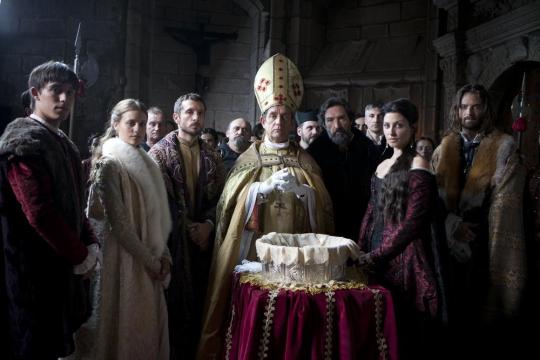
In early 1460s, Castilian nobles became dissatisfied with the rule of Enrique IV, and believed that Princess Juana was not King’s daughter. They called her la Beltraneja, a mocking reference to her supposed illegitimacy. Propaganda and rumour encouraged by the league of rebellious nobles argued that her father was Beltrán de la Cueva, a royal favorite of low background who had been elevated to enormous power by Enrique and who, by some, has been suggested as Enrique's lover.
Many nobles refused to recognise Princess Juana and preferred that Enrique instead name his younger half-brother, Alfonso as his heir. This was agreed to on the condition that Alfonso marries little Juana. Not long after this, Enrique reneged on his promise and began to support his daughter's claim once more. The nobles in league against him conducted a ceremonial deposition-in-effigy of Enrique outside the city of Avila and crowned Alfonso as a rival king.
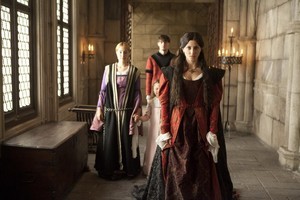
Queen Juana and her daughter were removed from the court. They lived in various castles as hostages, separately or together, protected by a faction of the nobility. The love affair of Queen Juana with the Bishop Fonseca’s nephew, Pedro of Castile, and the birth of her two illegitimate sons, caused great scandal. As a result of the need to conceal the pregnancy of her illegitimate sons, Juana of Portugal is considered the inventor of the farthingale.
In 1468, Alfonso of Castile died and Princess Juana was stripped of her succession-rights. Her aunt, Infanta Isabel, was placed before her, on condition that Isabel marry a man chosen out by the monarch. Queen Juana and her daughter sent a formal appeal to the Supreme Pontiff. Enrique accepted to divorce his wife and send her to Portugal, but Juana remained in Castile as king's wife, though separated of her husband. Isabel married Fernando of Aragon with the opposition of Enrique IV.
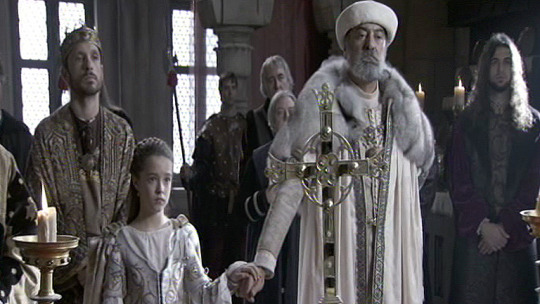
In 1470, Princess Juana was engaged and then married by proxy to the Duke of Guienne, brother of Louis XI of France. In the face of the French ambassador, King Enrique and Queen Juana swore before a crucifix that the Princess was their legitimate daughter. The French marriage never consummated, because the duke died two years later in France. Queen Juana always defended her daughter’s rights to the throne, and she had an active political participation. Queen Juana tried to get the support of nobles and cities, but with meager success and without palpable results. In 1474, Enrique IV died at the Alcázar of Madrid and rumors circulated that the late monarch had been poisoned, his wife and his daughter demanded an investigation. Queen Juana died a few months after her husband’s death at the age of 36. In the last months of her life, she lived at the convent of San Francisco in Madrid. The cause of her death is unknown.
Bárbara Lennie played Juana of Portugal in TV series "Isabel"
#juana de portugal#juana de avis#joan of portugal#women in history#spanish history#barbara lennie#Isabel tve#enrique IV#juana la beltranejs#juana de trastamara#juana de castilla
24 notes
·
View notes
Text
Queens and Princesses of the Spanish Kingdoms: Ages at First Marriage
I have only included women whose birth dates and dates of marriage are known within at least 1-2 years, therefore, this is not a comprehensive list. This data set ends with the transition to Habsburg-controlled Spain.
Sancha, wife of King Fernando I of Léon; age 14 when she married Fernando in 1032 CE
Ermesinda of Bigorre, wife of King Ramiro I of Aragon; age 21 when she married Ramiro in 1036 CE
Sancha, daughter of King Ramiro I of Aragon; age 18 when she married Count Ermengol III of Urgell in 1063 CE
Constance of Burgundy, wife of King Alfonso VI of Léon & Castile; age 19 when she married Count Hugh II of Chalon in 1065 CE
Felicia of Roucy, wife of King Sancho of Aragon; age 16 when she married Sancho in 1076 CE
Agnes of Aquitaine, wife of King Pedro I of Aragon; age 14 when she married Pedro in 1086 CE
Teresa, daughter of King Alfonso VI of Léon & Castile; age 13 when she married Count Henri of Burgundy in 1093 CE
Elvira, daughter of King Alfonso VI of Léon & Castile; age 15 when she married Count Raymond IV of Toulouse in 1094 CE
Bertha, wife of King Pedro I of Aragon; age 22 when she married Pedro in 1097 CE
Elvira, daughter of King Alfonso VI of Léon & Castile; age 17 when she married King Ruggero II of Sicily in 1117 CE
Berenguela of Barcelona, wife of King Alfonso VII of Léon & Castile; age 12 when she married Alfonso in 1128 CE
Urraca, daughter of King Alfonso VII of Léon; age 11 when she married King Garcia Ramirez of Navarre in 1144 CE
Petronilla, daughter of King Ramiro II of Aragon; age 14 when she married Count Ramon Berenguer IV of Barcelona in 1150 CE
Richeza of Poland, wife of King Alfonso VII of Léon & Castile; age 12 when she married Alfonso in 1152 CE
Sancha, daughter of King Alfonso VII of Léon & Castile; age 14 when she married King Sancho VI of Navarre in 1153 CE
Constanza, daughter of King Alfonso VII of Léon & Castile; age 16 when she married King Louis VII of France in 1154 CE
Urraca of Portugal, wife of King Fernando II of Léon; age 17 when she married Fernando in 1165 CE
Eleanor of England, wife of King Alfonso VIII of Castile; age 9 when she married Alfonso in 1170 CE
Sancha of Castile, wife of King Alfonso II of Aragon; age 20 when she married Alfonso in 1174 CE
Dulce, daughter of Queen Petronilla of Aragon; age 14 when she married King Sancho I of Portugal in 1174 CE
Berenguela, daughter of King Alfonso VIII of Castile; age 7 when she married Duke Conrad II of Swabia in 1187 CE
Marie of Montpellier, wife of King Pedro II of Aragon; age 10 when she married Viscount Raymond Geoffrey II of Marseille in 1192 CE
Garsenda of Foralquier, wife of Prince Alfonso II of Aragon; age 13 when she married Alfonso in 1193 CE
Constance of Toulouse, wife King Sancho VII of Navarre; age 15 when she married Sancho in 1195 CE
Constanza, daughter of King Alfonso II of Aragon; age 19 when she married King Emeric of Hungary in 1198 CE
Blanca of Castile, daughter of King Alfonso VIII of Castile; age 12 when she married King Louis VIII of France in 1200 CE
Eleonora, daughter of King Alfonso II of Aragon; age 22 when she married Count Raymond VI of Toulouse in 1204 CE
Urraca, daughter of King Alfonso VIII of Castile; age 19 when she married King Afonso II of Portugal in 1206 CE
Mafalda of Portugal, wife of King Enrique I of Castile; age 20 when she married Enrique in 1215 CE
Sancha, daughter of King Alfonso II of Aragon; age 25 when she married Count Raymond VII of Toulouse in 1211 CE
Elisabeth of Swabia, wife of King Fernando III of Castile; age 14 when she married Fernando in 1219 CE
Eleonora of Castile, wife of King Jaime I of Aragon; age 19 when she married Jaime in 1221 CE
Berenguela, daughter of King Alfonso IX of Léon; age 20 when she married Emperor Jean I of Brienne in 1224 CE
Marguerite of Bourbon, wife of King Teobaldo I of Navarre; age 15 when she married Teobaldo in 1232 CE
Yolanda of Hungary, wife of King Jaime I of Aragon; age 20 when she married Jaime in 1235 CE
Joan of Dammartin, wife of King Fernando III of Castile; age 17 when she married Fernando in 1237 CE
Yolanda, daughter of King Jaime I of Aragon; age 13 when she married King Alfonso X of Castile in 1249 CE
Isabelle of France, wife of King Teobaldo II of Navarre; age 14 when she married Teobaldo in 1255 CE
Kristina of Norway, wife of Prince Felipe of Castile; age 24 when she married Felipe in 1258 CE
Beatriz, daughter of King Teobaldo I of Navarre; age 16 when she married Duke Hugues IV of Burgundy in 1258 CE
Constanza, daughter of King Jaime I of Aragon; age 21 when she married Prince Manuel of Castile in 1260 CE
Constanza of Sicily, wife of King Pedro III of Aragon; age 13 when she married Pedro in 1262 CE
Isabel, daughter of King Jaime I of Aragon; age 14 when she married King Louis IX of France in 1262 CE
Beatrice of Savoy, wife of Prince Manuel of Castile; age 18 when she married Pierre of Chalon in 1268 CE
Blanche of France, wife of Prince Fernando of Castile; age 16 when she married Fernando in 1269 CE
Blanche of Artois, wife of King Enrique I of Navarre; age 21 when she married Enrique in 1269 CE
Beatriz, daughter of King Alfonso X of Castile; age 17 when she married Marquis William VII of Montferrat in 1271 CE
Esclaramunda of Foix, wife of King Jaime II of Majorca; age 25 when she married Jaime in 1275 CE
Maria de Molina, wife of King Sancho IV of Castile; age 17 when she married Sancho in 1282 CE
Yolanda, daughter of King Alfonso X of Castile; age 17 when she married Diego Lopez V de Haro in 1282 CE
Juana, daughter of King Enrique I of Navarre; age 11 when she married King Philippe IV of France in 1284 CE
Maria Diaz I de Haro, wife of Prince Juan of Castile; age 17 when she married Juan in 1287 CE
Yolanda, daughter of Prince Manuel of Castile; age 12 when she married Prince Afonso of Portugal in 1287 CE
Isabel, daughter of King Pedro III of Aragon; age 17 when she married King Denis of Portugal in 1288 CE
Isabel of Castile, wife of King Jaime II of Aragon; age 8 when she married Jaime in 1291 CE
Blanche of Anjou, wife of King Jaime II of Aragon; age 15 when she married Jaime in 1295 CE
Yolanda, daughter of King Pedro III of Aragon; age 24 when she married Prince Roberto of Naples in 1297 CE
Constanza of Portugal, wife of King Fernando IV of Castile; age 12 when she married Fernando in 1302 CE
Beatriz, daughter of King Sancho IV of Castile; age 16 when she married King Afonso IV of Portugal in 1309 CE
Maria, daughter of King Jaime II of Aragon; age 12 when she married Prince Pedro of Castile in 1311 CE
Constanza, daughter of King Jaime II of Aragon; age 12 when she married Prince Juan Manuel of Villena in 1312 CE
Teresa d'Entença, wife of King Alfonso IV of Aragon; age 14 when she married Alfonso in 1314 CE
Marie of Lusignan, wife of King Jaime II of Aragon; age 42 when she married Jaime in 1315 CE
Isabel, daughter of King Jaime II of Aragon; age 10 when she married King Frederick I of Germany in 1315 CE
Eleonora of Castile, wife of Prince Jaime of Aragon; age 12 when she married Jaime in 1319 CE
Elisenda of Montcada, wife of King Jaime II of Aragon; age 30 when she married Jaime in 1322 CE
Blanca de La Cerda y Lara, wife of Prince Juan Manuel of Castile; age 10 when she married Juan Manuel in 1327 CE
Constanza, daughter of King Alfonso IV of Aragon; age 18 when she married King Jaime III of Majorca in 1336 CE
Cecilia of Comminges, wife of Prince Jaime of Aragon; age 16 when she married Jaime in 1336 CE
Maria of Navarre, wife of King Pedro IV of Aragon; age 8 when she married Pedro in 1337 CE
Leonor of Portugal, wife of King Pedro IV of Aragon; age 19 when she married Pedro in 1347 CE
Eleonora of Sicily, wife of King Pedro IV of Aragon; age 24 when she married Pedro in 1349 CE
Juana Manuel, daughter of Prince Juan Manuel; age 11 when she married King Enrique of Castile in 1350 CE
Blanche of Bourbon, wife of King Pedro of Castile; age 14 when she married Pedro in 1353 CE
Constanza, daughter of King Pedro IV of Aragon; age 18 when she married King Federico of Sicily in 1361 CE
Maria de Luna, wife of King Martin of Aragon; age 14 when she married Martin in 1372 CE
Juana, daughter of King Pedro IV of Aragon; age 29 when she married Count Juan I of Ampurias in 1373 CE
Marthe of Armagnac, wife of King Juan I of Aragon; age 26 when she married Juan in 1373 CE
Beatriz of Portugal, wife of Prince Sancho of Castile; age 19 when she married Sancho in 1373 CE
Eleonora of Aragon, daughter of King Pedro IV of Aragon; age 17 when she married King Juan I of Castile in 1375 CE
Eleonora, daughter of King Enrique II of Castile; age 12 when she married King Carlos III of Navarre in 1375 CE
Isabel of Portugal, wife of Count Alfonso Enriquez; age 13 when she married Alfonso in 1377 CE
Violant of Bar, wife of King Juan I of Aragon; age 15 when she married Juan in 1380 CE
Beatriz of Portugal, wife of King Juan I of Castile; age 10 when she married Juan in 1383 CE
Juana, daughter of King Juan I of Aragon; age 17 when she married Count Matthieu of Foix in 1392 CE
Eleonora of Albuquerque, wife of King Fernando I of Aragon; age 20 when she married Fernando in 1394 CE
Yolanda, daughter of King Juan of Aragon; age 19 when she married Duke Louis II of Anjou in 1400 CE
Blanca I of Navarre, wife of Prince Martin of Aragon; age 15 when she married Martin in 1402 CE
Juana, daughter of King Carlos III of Navarre; age 20 when she married Count Jean I of Foix in 1402 CE
Beatriz, daughter of King Carlos III of Navarre; age 14 when she married Count James II of La Marche in 1406 CE
Isabel, daughter of King Pedro IV of Aragon; age 31 when she married Count Jaime II of Urgell in 1407 CE
Margarita of Prades, wife of King Martin of Aragon; age 14 when she married Martin in 1409 CE
Maria of Castile, wife of King Alfonso V of Aragon; age 14 when she married Alfonso in 1415 CE
Catalina of Castile, wife of Prince Enrique of Aragon; age 15 when she married Enrique in 1418 CE
Isabel, daughter of King Carlos III of Navarre; age 24 when she married Jean IV of Armagnac in 1419 CE
Maria, daughter of King Fernando I of Aragon; age 17 when she married King Juan II of Castile in 1420 CE
Eleonora, daughter of King Fernando I of Aragon; age 26 when she married King Duarte of Portugal in 1428 CE
Agnes of Cleves, wife of Prince Carlos of Aragon; age 17 when she married Carlos in 1439 CE
Blanca II of Navarre, daughter of King Juan II of Aragon and Queen Blanca I of Navarre; age 18 when she married King Enrique IV of Castile in 1440 CE
Eleonora of Navarre, daughter of King Juan II of Aragon and Queen Blanca 1 of Navarre; age 15 when she married Count Gaston IV of Foix in 1441 CE
Juana Enriquez, wife of King Juan II of Aragon; age 19 when she married Juan in 1444 CE
Isabel of Portugal, wife of King Juan II of Castile; age 19 when she married Juan in 1447 CE
Joana of Portugal, wife of King Enrique IV of Castile; age 16 when she married Enrique in 1455 CE
Isabel I of Castile, wife of King Fernando II of Aragon; age 18 when she married Fernando in 1469 CE
Juana, daughter of King Enrique IV of Castile; age 13 when she married King Afonso V of Portugal in 1475 CE
Juana, daughter of King Juan II of Aragon; age 21 when she married King Fernando I of Naples in 1476 CE
Isabel, daughter of King Fernando II of Aragon; age 20 when she married Prince Afonso of Portugal in 1490 CE
Juana, daughter of King Fernando II of Aragon; age 22 when she married Felipe I of Castile in 1501 CE
Margaret of Austria, wife of Prince Juan of Aragon; age 17 when she married Juan in 1497 CE
Maria, daughter of King Fernando II of Aragon; age 18 when she married King Manuel I of Portugal in 1500 CE
Catalina, daughter of King Fernando II of Aragon; age 15 when she married Prince Arthur of England in 1501 CE
Germaine of Foix, wife of King Fernando II of Aragon; age 18 when she married Fernando in 1506 CE
112 women; average age at first marriage was 16. The eldest bride was 42 years old, and the youngest was 7.
5 notes
·
View notes
Note
DIVINE RIGHT IS MADE UP AND THE RULES DON’T MATTER. Edward IV was a hugely suspected bastard. Mary I, England's first queen regnant, was legally a bastard. Same for Elizabeth I, who was also considered a bastard by Catholic Europe and a large part of her population. Paul I of Russia was also reportedly a bastard. William the Conqueror was a bastard (literally every Plantaganet claims, the longest running dynasty in English, came from William). Isabella the Catholic's great-great-grandfather and founder of the Trastámara dynasty was King Henry II of Castile, illegitimate son of Alfonso XI and his mistress, Eleanor de Guzmán. John I of Portugal, a bastard as well.
Not to be all 'it's a social construct' but it really is. Bastardy, male primogeniture and divine right are social constructs.
Yep, pretty much. Every time a Green stan screams about 'bastard can't inherit' I am like... How about you look a little at history? There are even bastards that inherit in Westeros and Rhaenyra's sons are not bastards by the legal term of the word. So their pearl clutching about it is ridiculous.
Anyway, going back to my novel where my 'bastard' protagonist is declared the heir by her father over her oh so legitimate brother. 🤷
23 notes
·
View notes
Text
La Reconquista De España
By: Jack Chasen
Un tiempo de el siglo de oro que muy importante es La Reconquista. Durante la centuria once, España quiere ser la región de Iberia. Iberia fue ocupado por los Muslims. España queiro él región por dos razones. Una razón es porque antes de la centuria once, los españoles tienen controlan de Iberia. Los Muslims fue capturado y ocupado el región por muchos años, y debilitado el ejército y el país de Españas.. Cuando los Españoles recuperan la fuerza, el ejército quiere recapturar Iberia. Otra razón es porque España tiene una creencia de cristiano. Los Muslims no fueron cristiano (obviamente) y los Españoles fue hacia el cruzado un meta primera de la conquista.
Por mucho tiempo, los Muslims controlaron mucho de España. La reconquista comenzó en 718, cuando el rey cristiano de España ganó la lucha de Covadonga. La victoria convince otras regiones de España que ataquen las regiones Muslim.
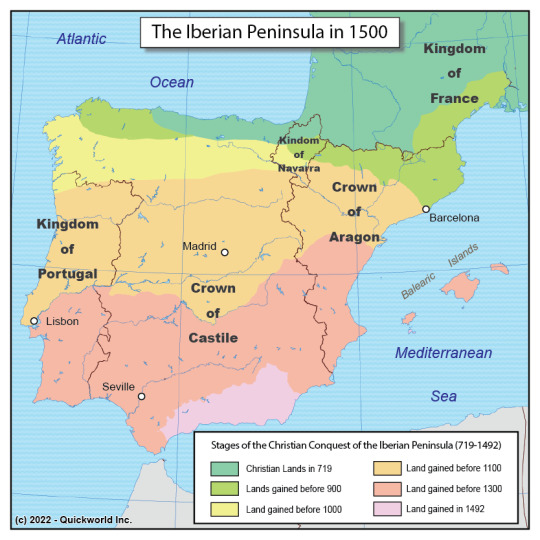
Muchos leders de el movimiento necessito converter los regiones muslim a cristiano. Muchos leders tiene tacticas muy daños y tristes para convertir y asesinato los Muslims. Pero, Alfonso IV, un leder de un region de España fue no convertir los Muslims y en cambio fue regla dos religiones. Alfonso refrencian a el que “un rey de dos religiones”.
youtube
Sin embargo, los Muslims no quieren abandaron la lucha. Los Muslims elisten el ayudado de los Almoravids, un grupo much brazo que consiste de Muslims de Norte Africa. Cuando los Almoravids llegaron a España, los Almoravids detener la lucha rapidamente, y assuman contrala de mucho de España. Los reinos cristianos fue attaque muchos reinos Almorávidos y eventualmente fracaso los Almorávides y completa la reconqustia.
Perro, en una historia muy complicado, los Almohados capturan la capital de los Almoravids y ganaron control. Consiauqamente, los Almohados recapturan los partes de España de los Muslims. Los cristianos en desesperación requestaron la ayudo de los otros reinos critainos. Los cristianos aceptan, y los ejercitos de Muslims fue muy daño y depletado.
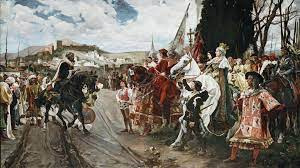
La reconquista experiencia un periodo muy pacifico después de 1236 porque los ejércitos necesitan reconstruir. En 1492, los reinos de España regana controlo y los ejércitos católicos fracasaron los muslims.
Los líderes de los reinos nuevas despues de la reconquista, Aragón y Castile, los reyes Ferdinand y Isabelle declara que las personas de los reinos necesitan convertir a cristiano o departan los reinos porque Ferdinand y Isabelle no quieran reglaron los Jews y Muslims, solamente los cristianos. Muchas personas que el leyo affectan fue convirtiran a cristiano, pero practicaron su religión en privado.
Un momento muy impacto de la historia ocuria despues de el evento. Isabelle y Ferdinand conocen que mucha gente practicaron su religión en privado, y Isabelle y Ferdinand fue creado el inquisición. Un evento muy devestada, los leders contribuyen a el murio y sufrir de muchos españoles.
En mi opinión, es necesario que las personas investiguen el contexto de los eventos de la historia. Muchas personas conocen de la reconquista y muchas personas conocen la inquisición, pero muchas personas no conocen que los eventos están relatados. El siglo de oro es un momento en la historia que tiene muchos eventos y impacto a el mundo. Yo esperanzo que tú aprende pequeña informacion.
Las citaciones:
3 notes
·
View notes
Text
Uno de los hechos históricos que más gracia me hacen de Felipe IV es que llegó a prohibir por mandato real que los hombres llevasen la lechuguilla al cuello el 11 de febrero de 1623.
Y me resulta aún más gracioso el pensar que probablemente España se sintiese aliviado con tal medida. No es para menos; imaginaos pasar de un simple cuello a una gorguera con lechuguilla moderada (Carlos I) —que al principio era reconfortante—, y de ahí a una gorguera con cuello alto con una pequeña lechuguilla (Felipe II) hasta la locura de lechuguilla (Felipe III) en la que, si se distraía, le comía la barbilla.
Creo que el impacto es mayor con imágenes.
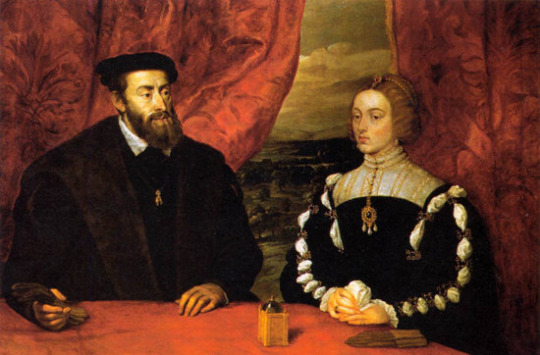
Aunque en la imagen es Isabel de Portugal quien lleva la gorguera con una lechuguilla moderada, casi inapreciable.

Felipe II, en 1565. La gorguera se encuentra oculta, dejando solo ver la lechuguilla.

La locura máxima... A lo largo de todo su reinado.

Y después esto, el llamado cuello golilla. En otros retratos de Felipe IV, más mayor, se le puede ver con el cuello valona.
Como curiosidad, Felipe IV lo hizo para reflejar esa lucha contra la corrupción del reinado anterior —vamos, el Rey de las buenas ideas que terminaron mal, como Alfonso XIII—, y huir de las tendencias que exportaba Francia, volviendo a refugiarse en la sobriedad.
De hecho, la lechuguilla llegaba a costar a doscientos reales, mientras que la golilla rondaba los cuatro.
#aph spain#hws spain#historical hetalia#(podéis también ver el claro desarrollo de la prenda en el dibujo de «Don Antonio»)#hay muchos escritos en el Siglo de Oro que se burlan de ella#y no es para menos#felipe iv
4 notes
·
View notes
Text
Making this a separate post so I don’t go off on a tangent in that love stories post...
Pedro and Inês’ love story was set against a very chaotic historical backdrop (but I guess that’s the norm...) The below is an extremely summarised version:
- Pedro’s wife Constança was the daughter of a very powerful Castilian nobleman, and King Afonso IV of Portugal worried that her father could turn against him due to how his daughter was being treated. Afonso IV himself had actually invaded Castile some years earlier because King Alfonso XI of Castile had mistreated his wife Maria, who was Afonso IV’s daughter.
- Inês’ brothers' political influence over Pedro was met with discontent and worry by the Portuguese nobility, especially the possibility that Pedro was being encouraged by them to get involved in Castilian affairs.
- Afonso IV was also worried about the possibility of an attempt on the life of his only legitimate grandson, the frail prince Fernando, in favour of Inês’ healthier children. Afonso IV himself had had to go to war against his father to secure his succession rights, as his father had favoured an illegitimate son. That civil war had lasted 5 years.
- And that illegitimate son was Afonso Sanches, who was declared a traitor by Afonso IV and who fled to Castile and had a son called João Afonso de Albuquerque.
- And that João Afonso de Albuquerque was the leader of a rebellion against king Pedro I of Castile, and offered prince Pedro of Portugal the crown of Castile in exchange for his support. This meeting was facilitated by Inês.
- King Afonso IV was absolutely determined not to have Portugal dragged into a foreign civil war, and this is what sealed Inês’ fate; her beheading was a gruesome warning to Pedro.
In the end it seems like Afonso IV only managed to delay the inevitable. His grandson king Fernando I of Portugal took after Pedro not only in matters of the heart, but he actually meddled in Castilian affairs, which led to the unsuccessful Fernandine wars and the ultimate end of the first dynasty and the interregnum. And then one of Pedro's illegitimate sons was crowned king anyway, just not any of those he had with Inês.
#lunie blabbers#this is absolutely irrelevant but did you know that Constança was first married to Alfonso XI of Castile?#who then got their marriage annulled (they'd been super young) so he could marry Maria#who was Pedro's older sister....the Pedro who Constança would later marry.....#history is wild. you can't make this up.#pedro and constança and inês were also all each other's cousins. which isn't as wild but i never knew that#i do respect invading castile cos your son-in-law is being an absolute dick to your daughter though i can't fault afonso iv for that
3 notes
·
View notes
Photo
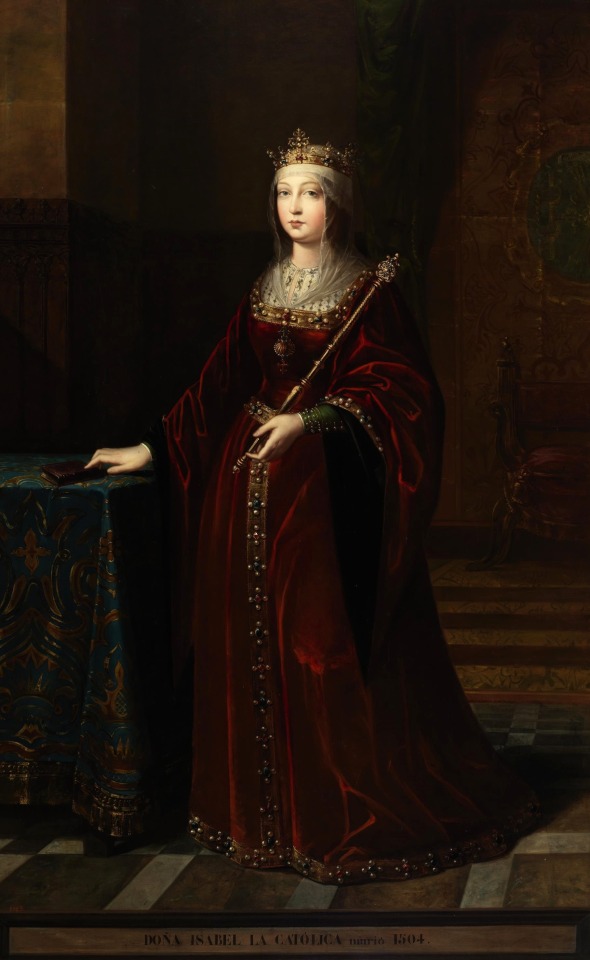

~ “Ysabel de Trastamara, Her Royal Catholic Majesty, Queen Lady Ysabel I of Castile, Mother of Hispanic (Madrigal of the Altas Torres, April 22, 1451 – Medina del Campo, November 26, 1504).Queen of Castile and Lion (1474-1504), Queen of Granada (1492-1504) and Queen Consort of the Crown of Aragon (1479-1504). Daughter of John II of Castile and Isabel of Portugal, Ysabel I of Castile was only three years old when her brother Enrique IV signed the Castilian crown (1454).In 1468, the monarch, a man of weak and indecisive character, recognized Princess Elizabeth as heir to the throne in the covenant of the Bulls of Guisando, by which he deprived of his successor rights to his daughter, Princess Juan, called the Beltraneja, pu This who was supposed to be daughter of Beltran of the Cave, Duke of Albuquerque.In order to consolidate their political position, the advisers of Ysabel the Catholic agreed to her wedding to Prince Ferdinand, firstborn of John II of Aragon, a link that was held in secret, in Valladolid, on October 19, 1469. The following year, annoyed by this marriage, Enrique IV decided to disinherit Ysabel and rehabilitate Juana in his status as heiress, who was married to Alfonso V of Portugal.The consequence was that, at the king's death, in 1474, a sector of the nobility proclaimed Elizabeth sovereign of Castile, while another nobility faction recognised Joan (1475), which marked the beginning of a bloody civil war.Despite the Portuguese monarch's help to the Beltraneja, the succession conflict was decanted in Ysabel's favor in 1476, in the wake of the grave defeat inflicted on its supporters by Prince Fernando of Aragon at the Battle of Toro. The fighting, however, took place on the Castilian-Portuguese border until 1479, in which the treaty of Alcaçobas meant the final recognition of Ysabel as queen of Castile by Portugal, as well as delimiting the area of expansion Spanish on the Atlantic coast of Africa. That same year, on the other hand, the death of John II made possible the accession of Fernando II to the throne of the Crown of Aragon, and the subsequent dynastic union of Castile and the Crown of Aagon. The master lines of the joint policy developed by Ysabel I and Fernando II were the entrenchment and expansion of real power, the stimulation of the economy, the conclusion of the total reconquest to the Muslims of the peninsula and the strengthening of the Catholic faith.To consolidate and prestige the monarchy, the queen implanted the Holy Brotherhood, institution charged with ensuring the stability of public order and the administration of justice (1476), abolished the prerogatives bestowed on the nobility by Enrique IV (1480) and made the Royal Council the principal governing body of the kingdom, to the detriment of the Courts.In the economic aspect, Ysabel the Catholic sanctioned the public treasury through a strict tax system and encouraged the development of sheep livestock and wool trade. In addition, he knew how to channel the military and expansive tradition of Castile toward the conquest of the Nazari kingdom of Granada, the last Islamic stronghold on the Peninsula (1492), and the war against the North African Muslims, which was snatched by Melilla (1497). Nevertheless, Isabelle's greatest foreign policy achievement was undoubtedly the financing of the expedition that would culminate in the discovery of America by Christopher Columbus (1492).In religious matters, lastly, Ysabel the Catholic carried out a profound ecclesiastical reform with the help of Cardinal Cisneros, created the Inquisition Court to oversee Catholic Orthodoxy (1478) and culminated the process of unification r selective with the expulsion of the Jews (1492) and the change (1502). At his death, happened on November 26, 1504 due to cancer, the Castilian throne passed to his daughter Juana, mother of the future monarch Charles I of Spain/Carlos V of the Holy German Roman Empire.“ ~
2 notes
·
View notes
Text
RAMIRO II
King of León
(born before 897 - died 951)

pictured above is an imagined portrait of the King of Asturias, by Rufino Casado from 1852
-------------------- ~ -------------------- ~ --------------------
SERIES - Descendants of the Kings of Asturias: Ramiro was a grandson of Alfonsu III, King of Asturias from 866. His father Ordoñu II, King of León is considered by some sources to have been King of Asturias from 914, though León was his base.
-------------------- ~ -------------------- ~ --------------------
RAMIRU was probably born before 897, on an unknown location at the Kingdom of Asturias. He was one of the sons of Infante Ordoñu of Asturias and Elvira Méndez.
Probably born during the reign of his grandfather Alfonsu III, King of Asturias he was a member of a branch line of the ASTUR-LEONESE DYNASTY and was named RAMIRU ORDÓÑEZ, meaning Ramiru son of Ordõnu.
During his childhood his father and uncles rebelled against his grandfather, who by 910 either abdicated or died. And at that time his uncle became García I, King of León and his father became the King of Galicia, founding another branch line of the Astur-Leonese Dynasty the Ordóñez Dynasty.
By 914 his uncle died without children and his father inherited his territories as Ordoñu II, King of León. But as some sources say that his uncle was also the King of the whole of Asturias, his father could also have become the King of Asturias. So he became an INFANTE OF LEÓN and possibly an INFANTE OF ASTURIAS.
In 924, when his father died, his older brothers were not considered to succeed to the throne. And instead his uncle Fruela II, King of Asturias became the ruler of León and Galicia.
When his uncle died in 925 a civil war arose as the Infante and his brothers began to fight their cousins, the sons of the late King Fruela II.
As he and his brothers received Gallician support during the civil war, it is believed that he married ADOSINDA around 925. She was from Gallician nobility, one of the daughters of Gutierre Osóriz, Count in Galicia and Aldonza Méndez. They were first cousins through their mothers, who were sisters, and possibly had three children (check the list below).
He and his brothers were victorious at the civil war and by late 925/early 926 his two older brothers became Sancho, King of Galicia and Alfonso IV, King of León. While he got the County of Portugal, but did not use the title of Count of Portugal.
Though his eldest brother King Sancho died without heirs around 929 and Galicia returned to the government of the Kingdom of León, under his other brother King Alfonso IV.
Some sources believe that he reputiaded his wife Adosinda around 930, because she was not acknowleged as Queen Consort when he succeeded as RAMIRO II, KING OF LEÓN around 931, after the abdication of his brother King Alfonso IV. He ruled as King of León and over Asturias, Galicia and Portugal.
However the former King, who had became a monk, soon regretted the abdication and tried to reclaim the throne, briefly managing to take León. Though he ultimately defeated his brother, imprisoned and blinded him.
Although it is not certain if he was still marrried to his first wife at the time of the abdication, it is known that around 932-34 he married again, to URRAKA. She was a Navarrese Royal as one of the daughters of Antso I, King of Pamplona and Tota Aznaritz. With her he had two children (check the list below).
Two of his second wife's sisters had already been Queen Consorts of León as wife's of his father and brother King Alfonso IV, so he may have decided to marry her to renew the Leonese-Navarrese alliance.
Over the years he fought the Muslims in the Iberian Peninsula, sometimes with Castilian, Navarrese and Aragonese support, and was known by the Muslims as "the Devil".
It was during his reign that Fernán González, Count of Castile took advantage of the neglection of Castilian lands by the government of León, to gain power over other eastern territories like Burgos and Álava. Thus creating the basis for the future Kingdom of Castile that would be ruled by descendants of both King Ramiro II and the Count of Castile.
The King of León died in early 951, probably at León, the capital of the Kingdom. He was probably at least in his fifties.
-------------------- ~ -------------------- ~ --------------------
After his death he was succeeded by his oldest surviving son as King Ordoño III. But the succession did not went smoothly and another of his sons Infante Sancho fought his half-brother, eventually succeeding as King Sancho I.
-------------------- ~ -------------------- ~ --------------------
Check my posts on RAMIRO II's family, his Royal House and his connections to the Kings of Asturias!
RAMIRO II and his first wife ADOSINDA may have had three children...
Bermudo Ramírez - probably unmarried;
Ordoño III, King of León - husband of Urraca Fernández; and
possibly Teresa Ramírez - possible wife of Gartzia II Santxitz, King of Pamplona.
With his second wife URRAKA he had two recorded children...
Sancho I, King of León - husband of Teresa Ansúrez; and
Elvira Ramírez, Regent of León - a nun.
And he may have had another child... either legitimate or illegitimate...
possibly Velasquita Ramírez - wife of Bermudo II, King of León.
He was born a member of a branch line of the Astur-Leonese Dynasty and became a member of another line, the Ordóñez Dynasty.
In a span of three generations, RAMIRO II was related to the Kings of Asturias through his father…
His father was Ordoñu II, King of León - possibly the King of Asturias between 914-24.
His grandfather was Alfonsu III, King of Asturias - the King of Asturias between 866-910.
#ramiro ii#king of león#kingdom of asturias#middle ages#medieval spain#medieval europe#astur leonese dynasty#royals#royalty#monarchy#monarchies#asturian royalty#spanish royals#royal history#asturian history#spanish history#iberian history#european history#world history#history#reconquista#9th century#10th century#history with laura
2 notes
·
View notes
Text
Day 2: Beatrice of Castile
Beatrice of Castile (also spelled Beatriz)
Born: 1293
Died: 25 October 1359
Parents: Sancho IV and María de Molina
Infanta of Castile
Queen of Portugal as the wife of Afonso IV ( 7 January 1325 – 28 May 1357)
Children: Maria (1313 – 18 January 1357) - the wife of Alfonso XI of Castile and mother of the future king Peter I of Castile.
Alfonso (1315– 1317)
Denis (born 12 February 1317) - died a few months after his birth
Peter (8 April 1320 – 18 January 1367) - King of Portugal
Isabel (21 December 1324 – 11 July 1326)
John (23 September 1326 – 21 June 1327)
Eleanor (1328 – 1348) - the wife of Peter IV of Aragon
She was born in Toro, Kingdom of Castile.
On 13 September 1297, the Treaty of Alcañices was signed by her mother, regent at the time, and the King of Portugal. The treaty included marriage clauses to reinforce the peace.
The four year old Beatrice abandoned Castile the same year to move to the Portuguese court where she was raised alongside her future spouse , Infante Afonso, who was 2 years her senior. She was raised in a refined environment, courtesy of her future father-in-law King Denis of Portugal.
Upon her arrival, she was given multiple wedding tokens including properties by the king. After marriage the number of estates increased, her husband gifting her a great number before even ascending the throne. She received even more properties after her son became king.
Before the marriage could take place a papal dispensation was required.
The papal bull was issued in 1301 but the marriage was postponed until Beatrice and Alfonso were of age.
In 1309 the two were married, aged 16 and 18. The marriage was celebrated in Lisbon on 12 September 1309. The marriage was happy and successful, Alfonso did not have a single child out of wedlock. The couple had 7 children, 3 living past infancy.
She played an important role in the affairs of the kingdom, mediated numerous conflicts, founded a hospital and left numerous properties and sums to religious establishments.
She had 7 children, only 3 reaching adulthood.
Beatrice died aged 66 in Lisbon. She is buried in Lisbon Cathedral next to her husband.
#portuguese history#spanish history#women history#history#medieval history#14th century#1300s#13th century
0 notes